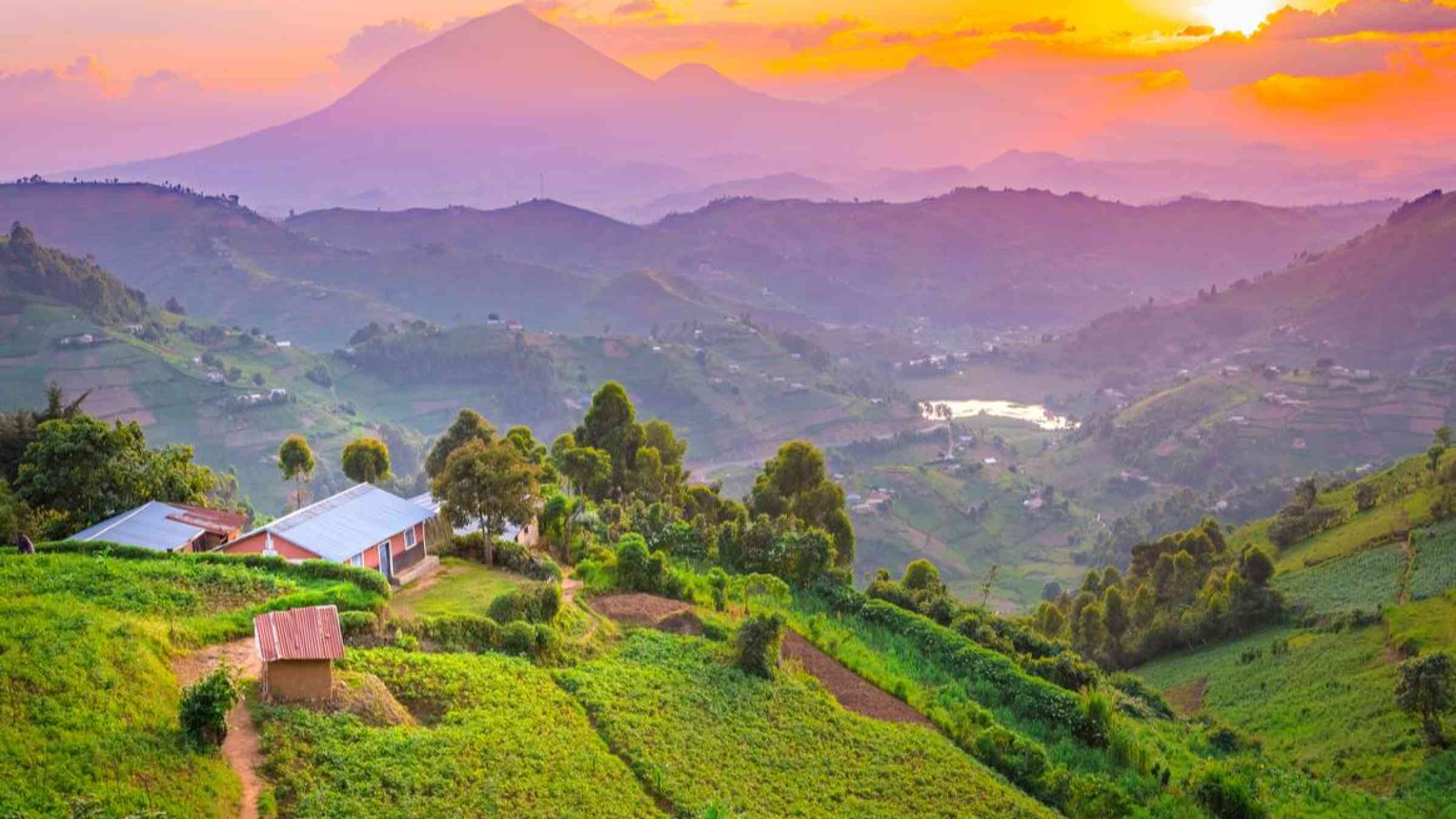Uganda is known as the “Pearl of Africa” because of its stunning natural beauty and biodiversity. Its lush vegetation is associated with regular tropical rainfall, but the East African nation is now struggling to deal with more frequent and intense rains that are causing landslides.
Landslides can dump millions of tons of muddy debris in Uganda’s rivers and streams, said Mary Goretti Kitutu, Uganda’s minister of energy and mineral development and an expert on geology and landslides. Such debris can dam rivers, flood surrounding areas, and cause damage to infrastructure.
“The main landslide types [in Uganda] are debris slumps, which occur on concave slopes where water concentrates. Slopes facing northeast are most prone to landslides, which coincide with the dominant rainfall direction,” Kitutu said.
The region’s soil profile is significant, she continued, explaining that “topsoils have a high infiltration rate, which allows fast flow of water into the deeper, clay-rich horizons—promoting water stagnation and causing slope failure.”
Landslide Losses
Although Uganda has always experienced some loss of life due to landslides, the number of casualties has increased this century.
Over the past 25 years, catastrophic landslides have regularly hit the foothills of Mount Elgon, for instance, which straddles the border between eastern Uganda and Kenya. The region’s most devastating landslide swept the slopes in 2010. Although more than 300 people are thought to have perished, only about 100 bodies were recovered. Thousands of homes were damaged or destroyed.
In 2012, a landslide followed 2 days of heavy rains in the same area. At least 18 people were killed, and 15 houses were destroyed. In December 2019, five people died in mudslides following heavy rainfall, 150 houses were destroyed, and the crops of smallholder farmers were swept away.
The most obvious trigger for Uganda’s slump landslides is rainfall. Rainfall events of low intensity but long duration are thought to be the most disastrous, a pattern that is well known among Ugandan farmers.
Callist Tindimugaya, commissioner for water resources planning and regulation in Uganda’s Ministry of Water and Environment, attributed the increase in rainfall to changing climate patterns and rapid loss of forest cover due to trees being cut down to be used as fuel. Tindimugaya said climate change is likely to increase average temperatures in Uganda by up to 1.5°C in the next 20 years and by up to 4.3°C by the 2080s.
“Changes in rainfall patterns and total annual rainfall amounts are also expected,” he added, “but these are less certain than changes in temperature.”
“Rain Has Become My Enemy”
“Rain has become my enemy. When it rains, my heart sinks,” said Gerald Masaba, a coffee farmer in the Bududa District in eastern Uganda.Masaba said many forests in the area have been turned into farms. The thin topsoil of converted forest often fails to retain water during heavy downpours, increasing the farm’s vulnerability to flood. In addition, terraced agriculture is not popular among farmers “because they believe terraces promote water infiltration, which triggers landslides,” Kitutu added.

Clovis Kabaseke, however, said farmers can be trained on how to successfully engage in terraced agriculture. Kabaseke is a lecturer and researcher in the School of Agriculture and Environmental Sciences at Mountains of the Moon University in Uganda.
Kabaseke said the agricultural method can be effective in maximizing arable land area in variable terrains and reducing soil erosion and water loss, but farmers need to be taught the most effective practices.
Displaced Communities
Alfred Okidi, the permanent secretary in Uganda’s Ministry of Water and Environment, said that in 2020, more than 850 people were permanently displaced by mudslides.
With assistance from partners such as the United Nations Central Emergency Response Fund (CERF) and the International Organization for Migration (IOM), the Ugandan government was able to safely relocate these displaced people. Okidi said IOM and CERF provided $818,000 in emergency relief.
Musa Ecweru, the state minister for relief and disaster preparedness in the Ugandan cabinet, was hopeful that the relocation would ultimately help build communities and economies. “The landslide victims were settled in Kiryandongo District,” he said, “where each household was given land to farm so that they can move on with their new lives.”
Rosemary Nandudu, however, says the transition will not be easy. Nandudu was relocated from the wet, fertile ecosystem of eastern Uganda to the drier one of the western Kiryandongo District and said the land provided by the government is not fertile. “It has been hard for us to adjust to a dry land, when most crops we used to know and grow cannot grow there,” she said.
Margaret Kemigisa, who grows tea in the foothills of the Rwenzori Mountains in western Uganda, said farmers who formerly grew crops such as beans, millet, and bananas have switched to tea. Tea requires heavy seasonal rainfall and is grown at altitudes that are less vulnerable to debris slumps.
“Farmers from Bushenyi, Kanungu, Mityana, Mbale, and Mukono—which are hilly—have been trained to grow tea, which can also be grown in greenhouses provided the soils are acidic,” Kemigisa said.
According to Nandudu, relocated communities also face lifestyle changes. They are unable to keep cattle in the new area and have to buy food, which was not the case in their former self-sufficient community.
Joseph Mafabi, who was relocated to Kiryandongo, had to find a new job in a refugee settlement to make ends meet. “I would have wanted to go back to the Elgon region, but the government is telling us that it is not safe to go back,” he said.
What Is Being Done
Community groups, government agencies, and nongovernmental organizations are working to reduce the frequency of landslides in Uganda, mostly by planting trees in vulnerable areas. In one settlement, a group of more than 100 teenagers began their own tree planting campaign to reduce the chance of future landslides.

Tom Obong Okello, executive director of Uganda’s National Forestry Authority (NFA), said the NFA has started planting trees on the slopes of Elgon to control soil erosion. “We are restoring the lost vegetation and trees to mitigate landslides in the area,” he said.
Trees for the Future, an international nonprofit organization, says it has planted more than 16 million trees in Uganda to help farmers restore their land and mitigate landslides.
David Duli, country director of World Wildlife Fund (WWF) Uganda, said WWF Uganda has helped organize community groups to reforest areas that have been the most affected by landslides. “Forests play a significant role in national development through their contribution to the ecological balance, energy, and industrial activities.…We have formed community groups to replant trees in areas that were affected by landslides, but we also wanted the community to own these initiatives,” Duli said.
